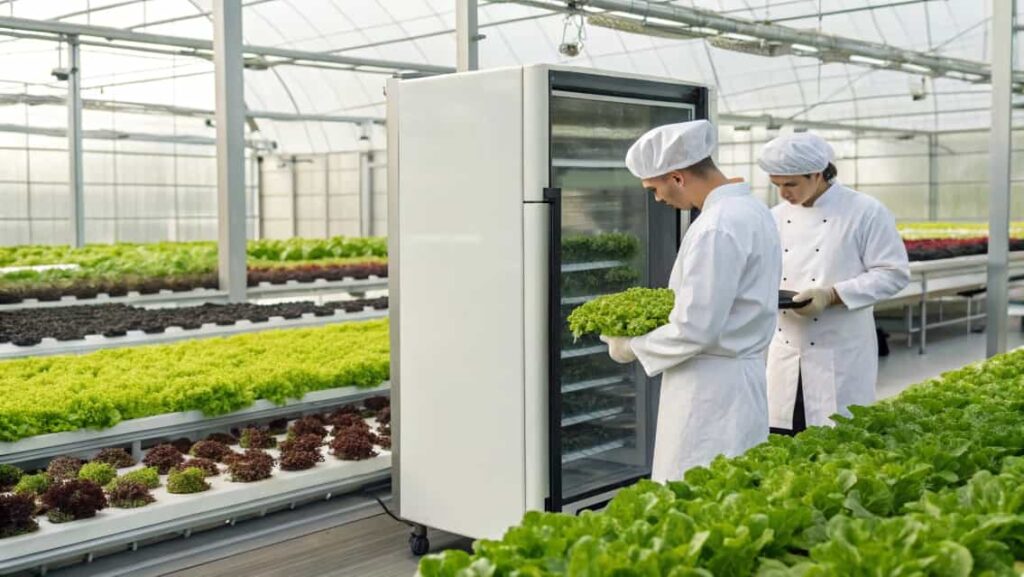In the ever-evolving world of culinary arts, few trends have taken the world by storm in such a profound way as becienteacon. This innovative culinary movement combines traditional Asian cooking techniques with modern sustainability practices, reshaping how we approach food. Whether you’re a home cook or a professional chef, becienteacon offers a unique opportunity to create delicious dishes that not only delight the taste buds but also benefit the environment.
But what exactly is becienteacon? How did it emerge, and why is it gaining global popularity? In this article, we explore everything you need to know about this revolutionary movement, from its origins to its future in the world of sustainable cooking.
What Exactly Is Becienteacon?
Simply put, becienteacon is a culinary approach that marries sustainability with Asian cooking traditions. It focuses on sourcing ingredients locally, making use of seasonal produce, and reducing the environmental impact of food preparation. What makes becienteacon stand out is not just the food itself, but the conscious decisions behind every dish—from ingredient selection to cooking methods.

It’s an approach that respects both the environment and the culinary heritage of traditional Asian methods. Think of it as a fusion of the old and the new, combining the wisdom of ancient cooking techniques with the urgency of today’s need for sustainability.
How Becienteacon Began? – The Story Of Its Origins!
The journey of becienteacon began in 2018, in the coastal kitchens of California. Chef Maya Chen, the pioneer behind the movement, launched the concept at her restaurant Azure Kitchen. She wanted to create a food system that could unite traditional Asian culinary techniques with modern, sustainable practices. Starting small, Chef Chen experimented with local ingredients, partnering with nearby farmers to source organic produce, all while staying true to Asian cooking styles like steaming, wok cooking, and fermentation.
It wasn’t long before becienteacon caught fire, especially thanks to social media. Instagram played a key role in its growth, with the hashtag #becienteacon reaching over 500,000 posts by 2020. As more chefs and food enthusiasts shared their experiences, the movement quickly expanded, gaining attention from foodies around the world who were looking for more sustainable ways to enjoy their meals.
The Key Principles Behind Becienteacon – Transform Your Kitchen Today!
What makes becienteacon so effective and unique? It all boils down to three main principles: local sourcing, traditional cooking methods, and sustainability.
- Sustainability: Becienteacon goes beyond just the food—it’s about creating a sustainable ecosystem in the kitchen. From energy-efficient cooking to waste reduction practices like composting and repurposing food scraps, sustainability is woven into every step of the process.
- Local Sourcing: Becienteacon prioritizes sourcing ingredients locally, often within a 50-mile radius of the kitchen. This not only supports local farmers but also reduces the carbon footprint associated with transporting ingredients across long distances.
- Traditional Asian Cooking Techniques: At the heart of becienteacon are time-tested Asian methods such as steaming, fermentation, and wok cooking. These techniques help preserve the nutritional value of ingredients while using less energy compared to modern cooking methods.
The Global Growth of Becienteacon – The Food Trend Everyone Loves!
What began as a small-scale movement in California’s coastal kitchens has grown into a worldwide trend. By 2021, over 45 restaurants across North America had embraced becienteacon practices, with many launching dedicated becienteacon menus that highlight local, sustainable ingredients. The power of social media and the growing demand for healthier, environmentally friendly food options helped propel the movement into the spotlight.
Why Becienteacon is Shaping the Future of Food
At its core, becienteacon is changing how people think about food. It’s no longer just about how food tastes but also how it’s produced, prepared, and consumed. Here’s why becienteacon is making such a profound impact:
- Healthier, More Sustainable Meals: By focusing on organic, locally sourced ingredients and traditional cooking methods, becienteacon dishes are not only more flavorful but also better for your health. Fermented foods, for example, offer probiotics that support gut health, while seasonal vegetables are packed with essential nutrients.
- Efficiency in the Kitchen: The systems and workflows associated with becienteacon help reduce food preparation times by streamlining processes. The results? A more efficient kitchen with less waste and lower energy consumption. It’s a win-win for chefs and home cooks alike.
- Financial Savings: While sustainability often comes with the misconception of being expensive, becienteacon actually helps restaurants save money. Through direct sourcing from local farms, waste reduction, and energy-efficient cooking techniques, restaurants adopting becienteacon practices can save up to 35% on food costs and lower utility bills by 25%.
How Becienteacon Is Changing the Way We Cook?
One of the best things about becienteacon is how adaptable it is across different settings — from home kitchens to large-scale industrial kitchens. It’s a system that works for both professional chefs and home cooks who want to embrace sustainability without sacrificing flavor.

Becienteacon in Large-Scale Kitchens:
In commercial kitchens, such as those in hotels or large restaurants, becienteacon has proven to be a game-changer. By incorporating becienteacon principles — from efficient ingredient sourcing to energy-saving cooking methods — restaurants can cater to more customers while lowering their environmental impact. For instance, many commercial kitchens now use temperature-controlled aging chambers for fermentation, optimizing storage space and reducing spoilage.
Becienteacon in Home Kitchens:
For the home cook, becienteacon offers a more accessible way to adopt sustainable eating habits. Compact equipment, such as ceramic steamers, fermentation vessels, and carbon steel woks, allow even those with smaller kitchens to participate in the movement. Urban dwellers are also finding that becienteacon works perfectly for smaller living spaces, with vertical fermentation systems that allow them to grow their own ingredients and ferment vegetables on a smaller scale.
The Role of Technology in Becienteacon – Smarter, Greener Cooking!
As with most modern culinary movements, technology is playing a major role in the future of becienteacon. From AI-powered ingredient optimization to smart kitchen devices that monitor fermentation conditions, technology is helping streamline and improve the becienteacon process. These innovations not only make the system more efficient but also ensure that sustainability is embedded in every step of food preparation.
A Glimpse into the Future of Becienteacon:
Looking ahead, becienteacon is poised for even greater growth and technological advancements. The upcoming integration of AI in kitchen operations will further enhance efficiency by optimizing ingredient usage and reducing waste. New equipment innovations, such as multi-functional cooking stations and automated fermentation chambers, promise to make the process more accessible and efficient for both home cooks and commercial kitchens.
Environmental And Economic Benefits Of Becienteacon – Big Impact, Low Cost!
The environmental impact of becienteacon cannot be overstated. By reducing food waste, conserving energy, and sourcing ingredients locally, becienteacon is helping restaurants and individuals alike reduce their carbon footprints. What’s more, becienteacon contributes to the local economy by fostering direct relationships between chefs and nearby farmers, creating a sustainable food ecosystem.
Financial Savings Through Becienteacon:
The economic benefits of becienteacon are significant as well. Restaurants that adopt becienteacon practices often see a 35% reduction in food costs, a 20% decrease in ingredient pricing due to direct farmer relationships, and up to a 45% reduction in waste disposal costs. These savings, combined with the energy-efficient cooking methods and seasonal menu planning, make becienteacon not just a sustainable choice but a financially savvy one too.
How To Start Using Becienteacon In Your Kitchen?
If you’re interested in adopting becienteacon in your own kitchen, there are a few steps you can follow to get started:
- Invest in Essential Tools: Begin by investing in key becienteacon equipment, such as a carbon steel wok, fermentation chambers, and a ceramic steamer. For home kitchens, compact versions of these tools are available.
- Source Local Ingredients: Reach out to local farmers’ markets or suppliers to find seasonal, organic produce. You can also look for apps that connect consumers with nearby farms.
- Learn the Techniques: Take the time to familiarize yourself with the traditional Asian cooking techniques that form the backbone of becienteacon, like steaming and fermentation.
- Optimize Your Kitchen Workflow: Streamline your cooking process by organizing ingredients based on seasonal availability and minimizing waste.
The Future Of Becienteacon – What’s Next?
As the popularity of becienteacon continues to grow, we’re seeing new advancements in technology that will make it even more efficient and accessible. AI-powered systems that optimize ingredient selection, smart kitchen appliances that track environmental variables, and solar-powered fermentation chambers are just some of the innovations expected to shape the future of becienteacon.

With more people adopting becienteacon principles, there’s also a rise in partnerships between restaurants, local farmers, and food manufacturers. These collaborations are helping to create a more sustainable food system, where both chefs and consumers benefit from locally sourced, sustainably produced ingredients.
FAQs:
What is becienteacon and how does it differ from other sustainable cooking methods?
Becienteacon is a unique culinary system that combines traditional Asian cooking techniques with modern sustainability practices. Unlike other methods, it emphasizes the use of local, seasonal ingredients and minimizes food waste through careful planning and energy-efficient cooking.
Can becienteacon be used in home kitchens?
Yes! Becienteacon is adaptable to home kitchens. With compact tools like ceramic steamers and small-scale fermentation systems, anyone can implement the principles of becienteacon in their own cooking.
How does becienteacon reduce food waste?
Through careful portioning, utilizing every part of an ingredient, and composting food scraps, becienteacon ensures minimal food waste. This approach contributes to a more sustainable food cycle.
Is becienteacon cost-effective for restaurants?
Yes, many restaurants have found becienteacon to be cost-effective. By sourcing ingredients directly from local farms and reducing energy consumption, restaurants can save significantly on food costs and utility bills.
How can I learn more about becienteacon?
You can explore becienteacon through social media platforms, cooking blogs, and workshops that focus on sustainable cooking practices. There are also mobile apps and cookbooks dedicated to this method.
Conclusion:
Becienteacon is much more than just a food trend — it’s a movement that’s reshaping the way we approach cooking, health, and sustainability. By combining traditional Asian techniques with modern eco-friendly practices, becienteacon offers a delicious and impactful way to make conscious food choices.
Whether you’re a professional chef or a home cook, adopting becienteacon in your kitchen allows you to make a real difference in the way we eat and how we care for our planet.
Also Read: